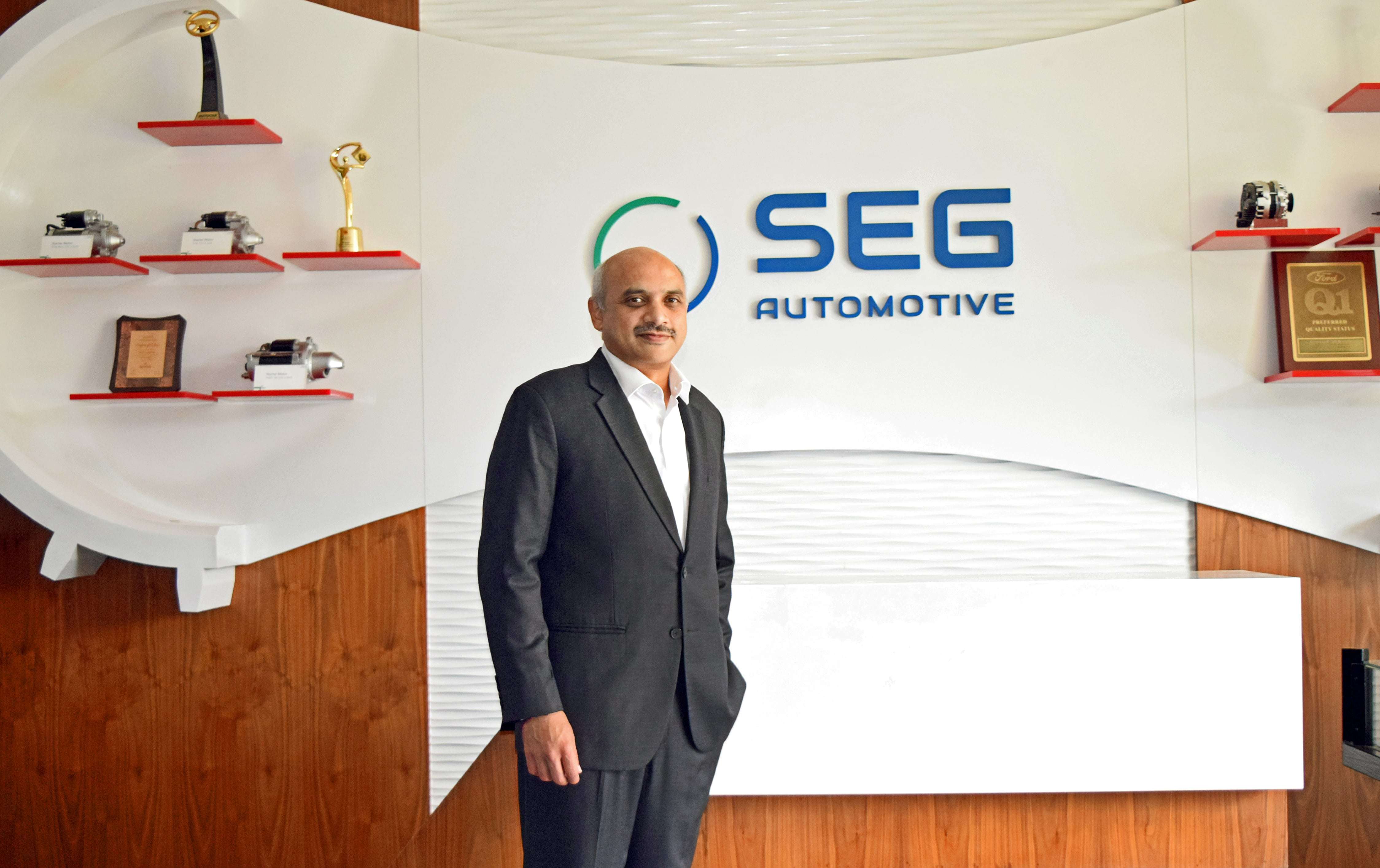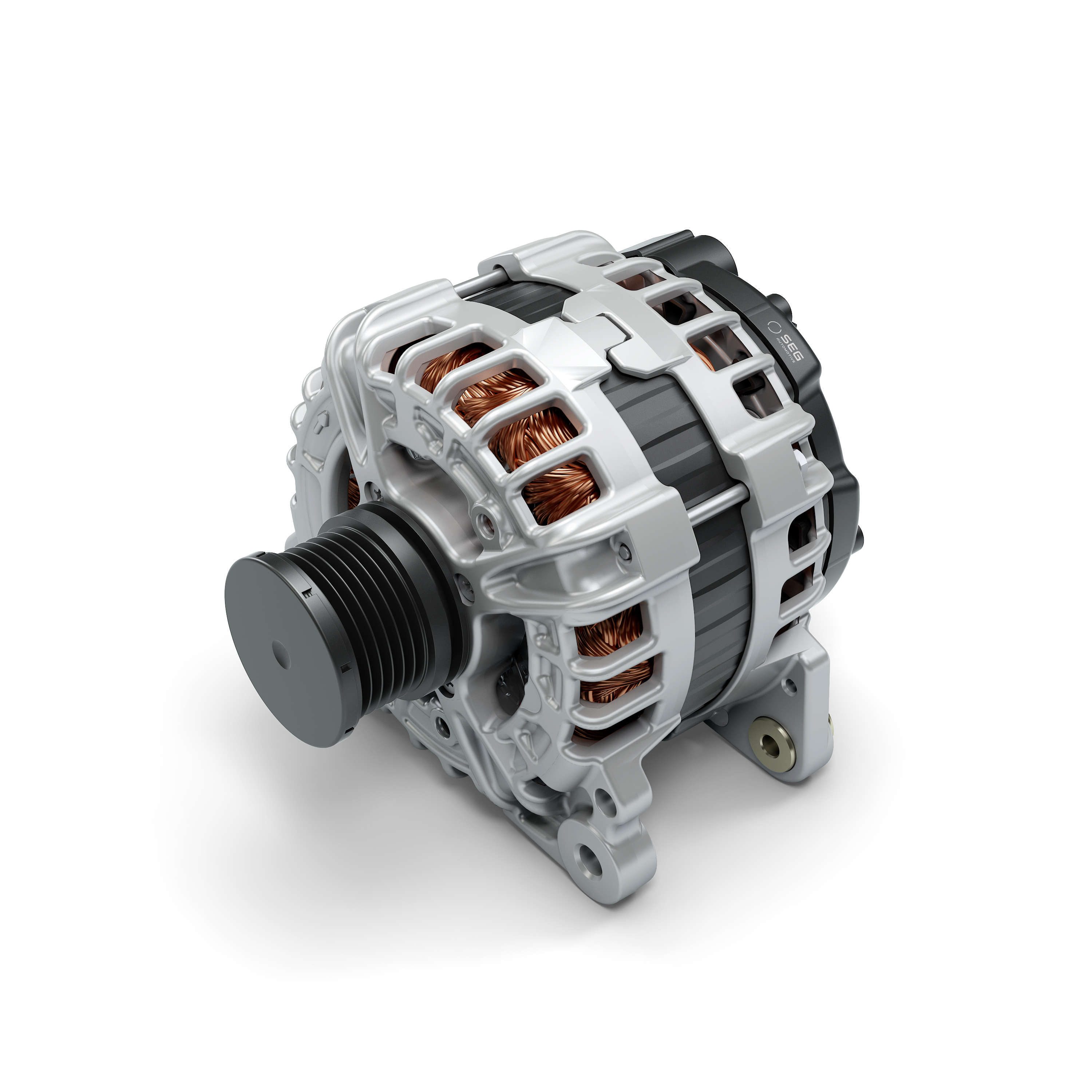 The edited excerpts:
The edited excerpts:Q. Now that we’ve had this once-in-a-generation seismic event, has this brought any change in your business perspectives?
When Covid hit a year ago, nobody knew what was going to happen. From SEG’s point of view we have always maintained a balanced portfolio where we cater to almost all auto segments including passenger vehicles, two-wheelers, off-highway and commercial vehicles. The key aspect that I see as a unique opportunity is the switchover to BS-VI technology. This transition enabled us to go for some important acquisitions in the passenger car segment.
And as customer preferences started favouring micro mobility options we also shifted our long-term focus to personal mobility from shared mobility. If we see the trend over the last year, personal mobility in light electric vehicles was somewhere around 2.8 million units which was almost 22% compared to 2019. In the current year, the personal mobility space is projected to be 3.2 million to 3.4 million units which will be 21%-18% higher than that in the previous year.
Global light electric vehicle production stood at about 74 million levels in 2020 which was down by 16% compared to 89 million units running in 2019. The forecast says that the global light electric vehicle is going to reach about 83 million which means the segment will see a growth of about 10% compared to last year. In the domestic market this segment declined 23% last year.
Q. So, what components will get prominence in SEG’s push towards personal mobility?
For the car segment, the focus is mainly on high efficiency generators in the BS-VI era. This generator is catching up quite fast in the market and we have one of the best in its class. This new high power and high efficiency generator is a new product addition from our side. It can achieve almost 80% of efficiency on the alternator side of generators.
Also within starters the car segment is moving towards a start-stop portfolio.
It is also important to see the transition happening on the electric two-wheeler side. Now, with the FAME-II scheme, we see a big reaction coming from two-wheeler electrification. In this space, we maintain a healthy portfolio both for the hub motors and mid-mount. At present SEG has a complete portfolio of hub motor systems starting from 850W to 2kW. Additionally, on the mid-mount machines we have the range from 1.2kW to 10kW in terms of power. With these products we are quite confident that this year there will be big uptake on the personal mobility demand as we move out of the second wave of COVID-19.
Q. Can you give us a segmentation of your business?
I cannot put an exact number on our business segmentation as our classification of products is market-dependent due to our presence in all the segments. Segment-wise, M&HCV took a very deep hit in 2020 with a sale of just 170,000 units, much lower than the 540,000 units in 2018 and 380,000 in 2019. This year the sales for M&HCV will hover around 220,000-250,000 units.
Additionally, three-wheelers also took a major hit as shared mobility came down. Even after maintaining a strong hold on this market, we faced the heat. However our balanced portfolio helped us in staying well above the market.
Going forward, personal mobility will hold a major chunk of our business depending on the improvement in the market and consumer.
Q. When two of your major segments, M&HCV and three-wheelers, are in doldrums, what keeps your business afloat?
Despite a huge dip in the domestic market in the past few months, our exports stood steady and that helped us a lot in sailing through the turmoil. Currently, 35%-40% of our production goes to the export markets which include the European countries, ASEAN, Japan, and Korea.
Q. What are you doing to minimise the current supply chain disruptions?
There is a lot of uncertainty on the supply chain because of localised lockdowns as we have a distributed supplier base across the country. In order to keep our customers’ line running so that we don’t get into issues we have an agile way of releasing alternative sources. Multiple sourcing is our strategy on the supply chain side which we have expedited so that we de-risk ourselves from single sourcing.
We have also increased our rate of localisation which helped us to de-risk ourselves from global disruptions. This is something we are very much focused on to ensure that we get very flexible on the supply chain which is one of the key bottlenecks today.
Q. What is your current level of localisation and are you looking to enhance it?
Our localisation level is above 80% right now and we are pushing for higher numbers as we enter next month with the FAME-II subsidy scheme. Bottlenecks will come on the side of electronics. Apart from this, we will push localisation of the rest. This year we are pushing for 85%-90% localisation.
Q. How will the changing consumer preferences and disruptive technologies affect SEG’s growth in FY22?
We see double-digit growth in FY22 in the domestic market and exports on the conventional product side. Big numbers will come on the light electric mobility side because of the new FAME-II subsidy scheme.
We believe that the Indian market will remain dominated by ICE vehicles till 2027 with almost 85%-90% sales coming from conventional vehicles. We also believe that the intermediate stage before electric would be hybrids.
Light electric mobility will come in big numbers in India before the transition happens in a bigger way on the passenger vehicle segment. For this space our product portfolio is complete like in two-wheelers or three-wheelers. By 2025 we believe that electric two-wheelers could be anywhere between 5% and 10% of the existing market and the electric-three wheelers would be 15%-20% of the conventional market.
In the past two and a half years we have invested significantly in this space. We have a modular design and a system solution, including transmission, for this segment and we have geared up our manufacturing to take care of this big growth coming on the EV side.
















